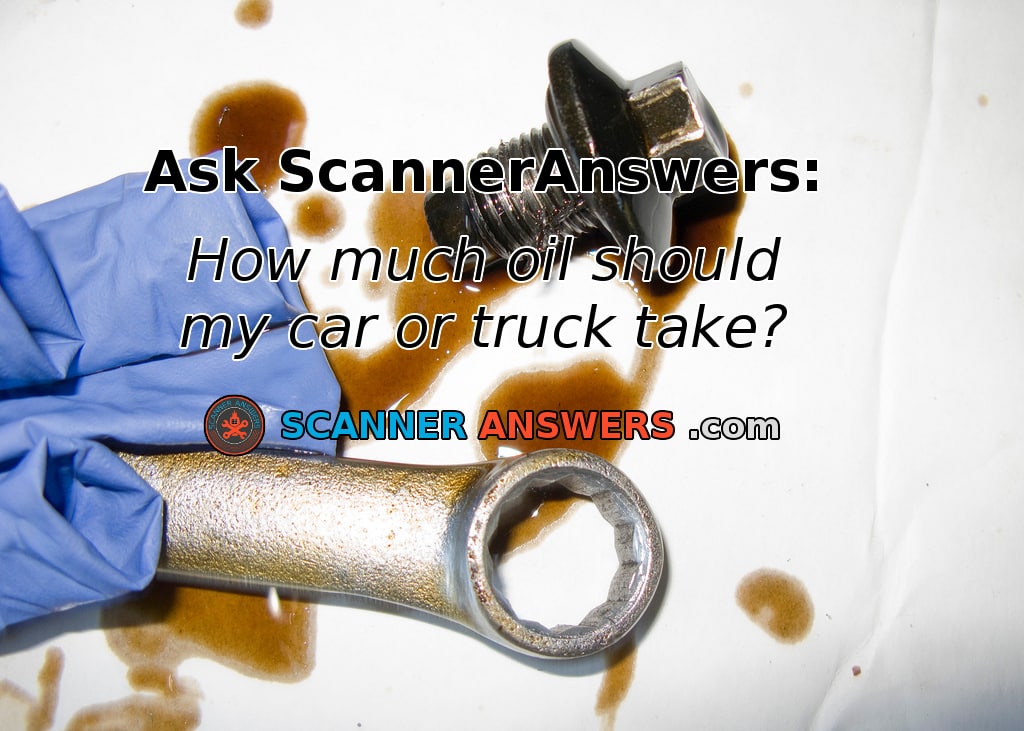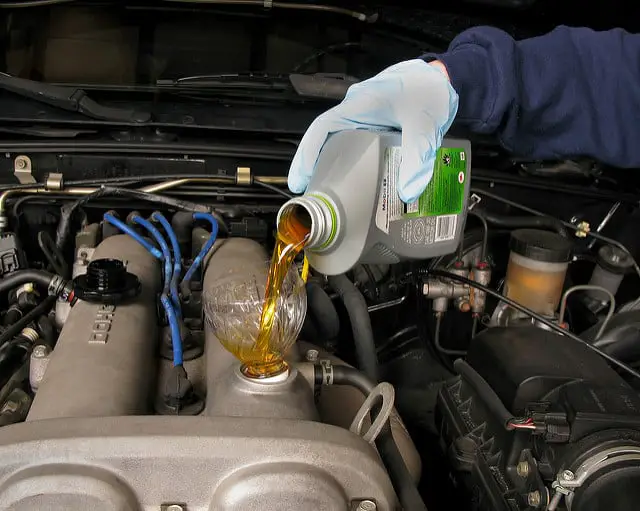
image creds: Robert
Stop overfilling the oil in your car!
Vince here to take a break from talking about fixing your car with OBD-ii scan tools and focus on another important vehicle part: Your Oil!
The oil inside your engine is the lifeblood that lubricates and cleans crucial engine parts. Many people make the mistake of classifying engine oil as a lubricating agent alone, but the opposite holds true especially in today’s modern age of metallurgy and chemistry.
The engine oil is also capable of cleaning various moving parts inside the engine. Oil lifts off dirt, grime, and sludge to improve engine performance. The oil filter will effectively remove all the suspended particles in the oil, ready to be flushed out on your next oil change.
It is then important to know the answer to ‘how many quarts of oil does my car need?’ as oil levels are just as important as the type of oil you decide to use.
Want to know the sure-fire way to kill a modern engine? Either too much or too little oil will damage your engine in one way or another.
This is the reason why it’s crucial to always check the oil and other car fluids before each trip, especially on long journeys. There are many of kinds of engine oil sold in the market and they come in mineral, semi-synthetic and full synthetic forms.
The type of oil to use will depend on a variety of factors such as the prevailing weather and the type of car you drive. High-performance and high compression engines are better suited to use fully synthetic oil as this is more resilient to extreme heat and pressure. Mineral oil is enough for most cars, but a semi-synthetic blend presents the best compromise in terms of engine cleaning, performance, and overall cost.
How to Determine Proper Oil Level and Capacity
Many people ask the question “how many quarts of oil does my car need?” without referring to the owner’s manual of the car. The owner’s manual will tell you everything you need to know regarding how many quarts are required by your engine with each oil change.
Other car models may also come with sticker stamps beneath the hood or around the engine bay and will indicate the type of oil to use as well as the total oil capacity of the engine.
A dealership repair center can also give you the exact figure to determine engine oil capacity. You may also use the power of the Internet to accurately determine the right amount of oil for a specific engine.
A quick and helpful tip to determine how many quarts an engine requires will have something to do with the number of cylinders and the engine displacement.
Small 4-cylinder engines with a capacity of 1.6 to 1.8 liters usually have an oil capacity of 3.5 to 3.7 liters or approximately 3.6 quarts. If you have a larger 2.0-liter 4-cylinder engine then the approximate oil capacity is around 5 quarts.
The trick is to consider a quart of oil for every cylinder and deduct at least half a quart from the total figure. If your vehicle is equipped with a V12, then the approximate oil capacity is around 11.5 quarts.
Based on our example, this means that a V6 engine may require anywhere from 5.5 to 6 liters, or approximately 5.8 quarts. A large V8 engine will need anywhere from 7 to 7.5 liters of oil or 7.9 quarts, give or take.
How to Visually Check the Oil Level in your Engine
The safest way to determine the right amount of oil inside the engine is through the engine oil dipstick. The dipstick will have the markings L (for low) and H (for high) so you can easily determine if your engine is running low on oil.
The sweet spot is that the oil level should be between the L and H markings. Here’s the proper way to determine the oil level using the dipstick.
- Park the car in a safe and level area. It is best to work with a warm engine. If you’re dealing with a cold engine, you should start the car and let the engine warm up. Take a short drive for 15 to 20 minutes to allow the oil to circulate inside the motor.
- After warming it up, turn off the engine and wait 5 minutes for the oil to settle on the oil pan. This will allow you to get a more accurate reading of the oil level.
- Pop open the hood and pull out the dipstick.
- Wipe the end of the dipstick with a cotton rag and fully re-insert the dipstick into the hole.
- Pull it out again and read the oil level. The level should be between the L and H markings.
- If the oil level is low, you should add fresh motor oil. Simply remove the engine oil filler cap and add oil as needed

How Will I Know if my Engine Needs an Oil Change?
The single best way to know the proper time to change the oil is to follow the recommendations in the owner’s manual or service manual of your vehicle.
Depending on the make and model of the vehicle, the average service schedule is around 7,500 to 10,000 miles using fully- synthetic motor oil.
Other vehicles need an oil change every 5,000 or so miles. You will need to change the oil sooner if your car is subjected to extreme driving conditions, such as stop-and-go traffic and repeated short drives.
If you pull out the dipstick and you notice that the oil is black or extremely dirty, then you might consider changing the oil. Take note that a dirty engine oil does not necessarily mean that it’s time for an oil change. It simply means that the oil is doing its job quite well.
Here are some things to look out for that will help you determine if your car is pleading for an oil change:
- If the oil level light on the console illuminates after starting the car or while driving. The oil level light is usually an indication of low oil levels inside the engine. This could also mean that it’s been a while since you changed the oil.
- If your vehicle is equipped with an oil pressure gauge, then a low reading will mean that your engine needs oil. Check the condition of the oil and the oil level using the dipstick.
- If you notice that the engine is running a bit rough, then this could probably mean that you need to change the oil.
Did you just buy a used car? Don’t take the seller’s word for it. The first thing that you should do after buying a used car is to visually check and inspect the condition of the motor oil. When in doubt, it wouldn’t hurt to change the oil and the oil filter.
Conclusion
Remember that regular oil changes as prescribed by the manufacturer are part of the periodic maintenance procedure of your car. This will make sure that your car is always in tip-top shape. But if you start having issues with your call and see the Check-Engine MIL illuminate, grab an OBD2 reader to diagnose the code and see if you can fix it yourself!
Read This Next: Top engine oil for 454 motorhomes-Vince